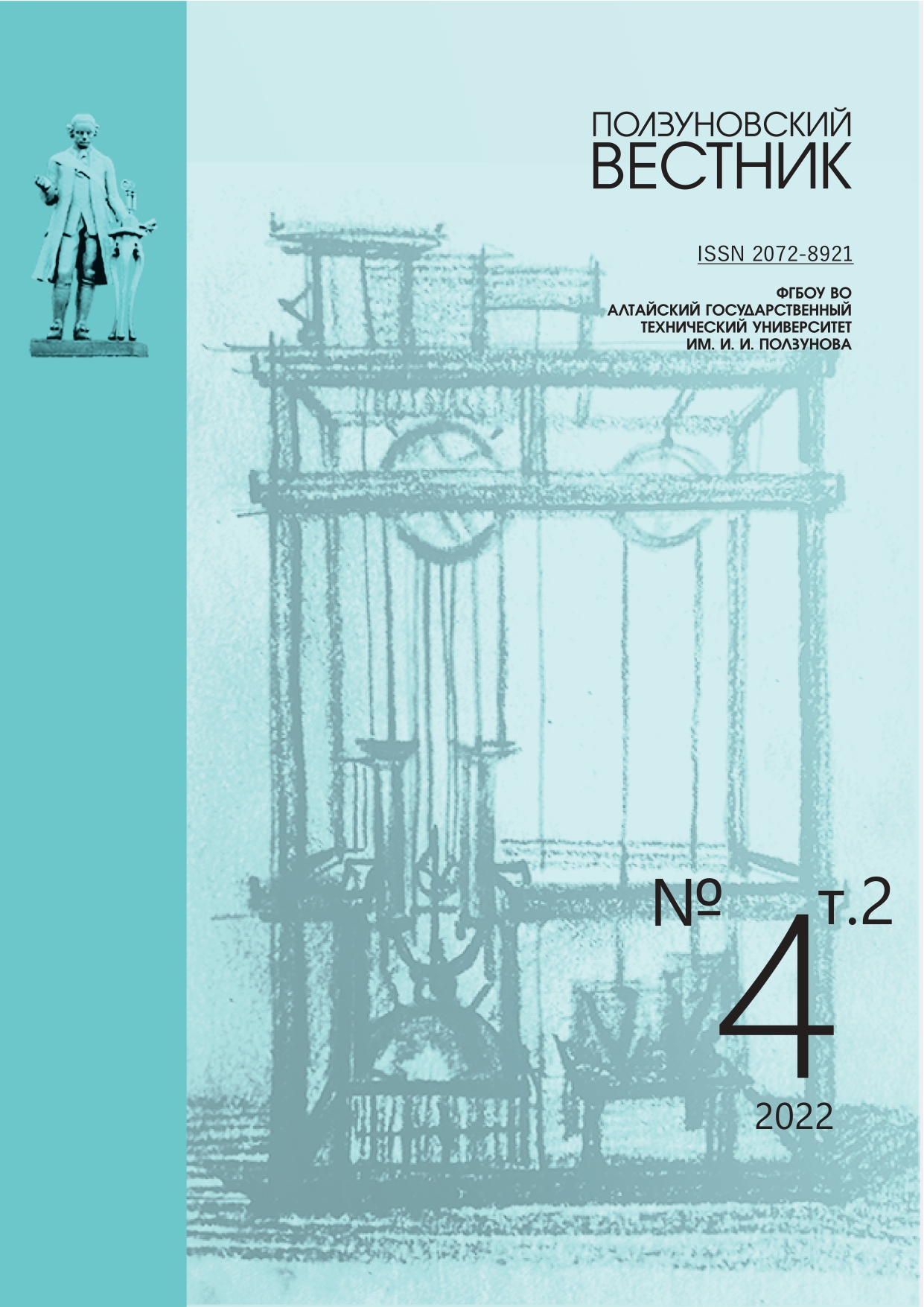On the matter of obtaining the composite piezoelectric thick film coatings based on phosphate binders and PZT piezo ceramics
DOI:
https://doi.org/10.25712/ASTU.2072-8921.2022.4.2.015Keywords:
piezoelectric coating, phosphate binder, phosphate paint, piezoelectric composite, lead zirconate-titanate, orthophosphoric acid, passivation, electric capacitance, dielectric loss, polarization, piezoelectric modulusAbstract
The possibility of producing piezoelectric composite coating based on the phosphate binder and dispersed lead zirconate-titanate based piezoelectric ceramic filler in experimentally proven in this work. Disperse filler is manufactured by sintering piezoelectric ceramics up to the density of 7.5 g/cm3 and high energy milling of sintered ceramics in planetary ball mill. Pure orthophosphoric acid and orthophosphoric acid passivated by introduction of aluminum powder were used as a phosphate binder. Pure and passivated orthophosphoric acid is added to the filler in the amount of 1, 5, 10, 15, 20 % in excess of a filler weight. Components are mixed and thinned with water to a paste consistency. Paste was applied on a stainless steel surface via screen printing, dried at room temperature, coated with graphite electrode and poled in 1 kV/mm static electric field during cooling from 100 and 290 °C (the latter being Curie temperature of a filler ceramics). After each poling cycle the values of piezoelectric modulus d33, electric capacitance C0, and dielectric loss factor tgδ were measured. Piezoelectric properties are found for coating containing 10 % of active electric phase, as coatings with lower content had insufficient mechanical strength and coatings with higher content showed no piezoelectric properties after poling. Poling under cooling from Curie temperature of a filler lead to the significant increase in d33, and coating based on passivated orthophosphoric acid had double the value of d33 compared to one based on pure acid. Based on obtained results mechanisms of structure and properties emergence of a piezoelectric coating in described system were proposed. Main ways to control the properties of a produced coating are noted: passivation of orthophosphoric acid, controlling the active liquid phase content and thermal treatment of produced coating. Directions of the further work to obtain piezoelectric coatings based on phosphate binders and piezoelectric ceramic fillers are proposed.
References
Giurgiutiu, V. Structural Health Monitoring with Piezoelectric Wafer Active Sensors. Academic Press, 2014. 1025 с.
Giurgiutiu V., Lin B. In situ fabricated smart material active sensors for structural health monitoring // Smart Materials III. SPIE, 2004. Т. 5648. С. 68–78. doi: 10.1117/12.582146.
Bhalla, S. Piezoelectric Materials: Applications in SHM, Energy Harvesting and Biomechanics. Piezoelectric Materials. John Wiley & Sons, 2016. 293 с.
Newnham, R.E., Safari A., Sa-Gong G., Giniewicz J. Flexible Composite Piezoelectric Sensors // 1984 IEEE Ultrasonics Symposium, IUS 1984. Institute of Electrical and Electronics Engineers Inc., 1984. – Т. 11. – С. 501–506. doi: 10.1109/ULTSYM.1984.198348.
White N.M., Turner J.D. Thick–film sensors: past, present and future // Meas. Sci. Technol. 1997. Т. 8. № 1. С. 1–20. doi: 10.1088/0957-0233/8/1/002.
Egusa S. N., Iwasawa N. Piezoelectric paints as one approach to smart structural materials with health-monitoring capabilities // Smart Mater. Struct. 1998. Т. 7. № 4. С. 438–445. doi: 10.1088/0964-1726/7/4/002.
Effect of exposure of piezoelectric paint to water and salt solution / P.N. Raptis, R. Stephenson, J.M. Hale, J.R. White // J. Mater. Sci. 2004. Т. 39. № 19. С. 6079–6081. doi: 10.1023/B:JMSC.0000041705.16488.85.
Li X., Zhang Y. Analytical study of piezoelectric paint sensor for acoustic emission–based fracture monitoring // Fatigue Fract. Eng. Mater. Struct. 2008. Т. 31. № 8. С. 684–694. doi: 10.1111/j.1460-2695.2008.01249.x.
Payo I., Hale J.M. Dynamic characterization of piezoelectric paint sensors under biaxial strain // Sens. Actuators Phys. 2010. Т. 163. № 1. С. 150–158. doi: 10.1016/j.sna.2010.08.005.
Yang C., Fritzen C.–P. Piezoelectric paint: characterization for further applications // Smart Mater. Struct. 2012. Т. 21. № 4. С. 1–8. doi: 10.1088/0964-1726/21/4/045017.
Study on Impact Monitoring Using a Piezoelectric Paint Sensor / K. Choi, D. Kang, S.–B. Park, L.–H. Kang // J. Korean Soc. Nondestruct. Test. 2015. Т. 35. № 5. С. 349–357. doi: 10.7779/JKSNT.2015.35.5.349.
Han D.–H., Kang L.–H. Piezoelectric properties of paint sensor according to piezoelectric materials // Funct. Compos. Struct. 2020. Т. 2. № 2. С. 1–11. doi: 10.1088/2631-6331/ab90e1.
Energy harvesting from piezoelectric paint films under biaxial strain / I. Payo, D. Rodriguez, J. Oliva, D. Valverde // Smart Mater. Struct. 2020. Т. 29. № 5. С. 1–13. doi: 10.1088/1361-665X/ab79b4.
Получение и исследование пьезоэлек-трического композита в системе «цирконат–титанат свинцаортофосфорная кислота» / Г.А. Кошкин, Ч.Г. Пак, А.Е. Розен, В.В. Кикот // Ползу-новский Вестник. 2022. № 1. С. 139–146. doi: 10.25712/ASTU.2072-8921.2022.01.019.
Судакас Л.Г. Фосфатные вяжущие систе-мы. СПб: Квинтет, 2008. 254 с.
Рез И.С., Поплавко Ю.М. Диэлектрики. Основные свойства и применение в электротех-нике. Москва: Радио и связь, 1989. 288 с.
Downloads
Published
How to Cite
Issue
Section
License
Copyright (c) 2022 Gleb A. Koshkin

This work is licensed under a Creative Commons Attribution 4.0 International License.















 .
. This work is licensed under a
This work is licensed under a 
